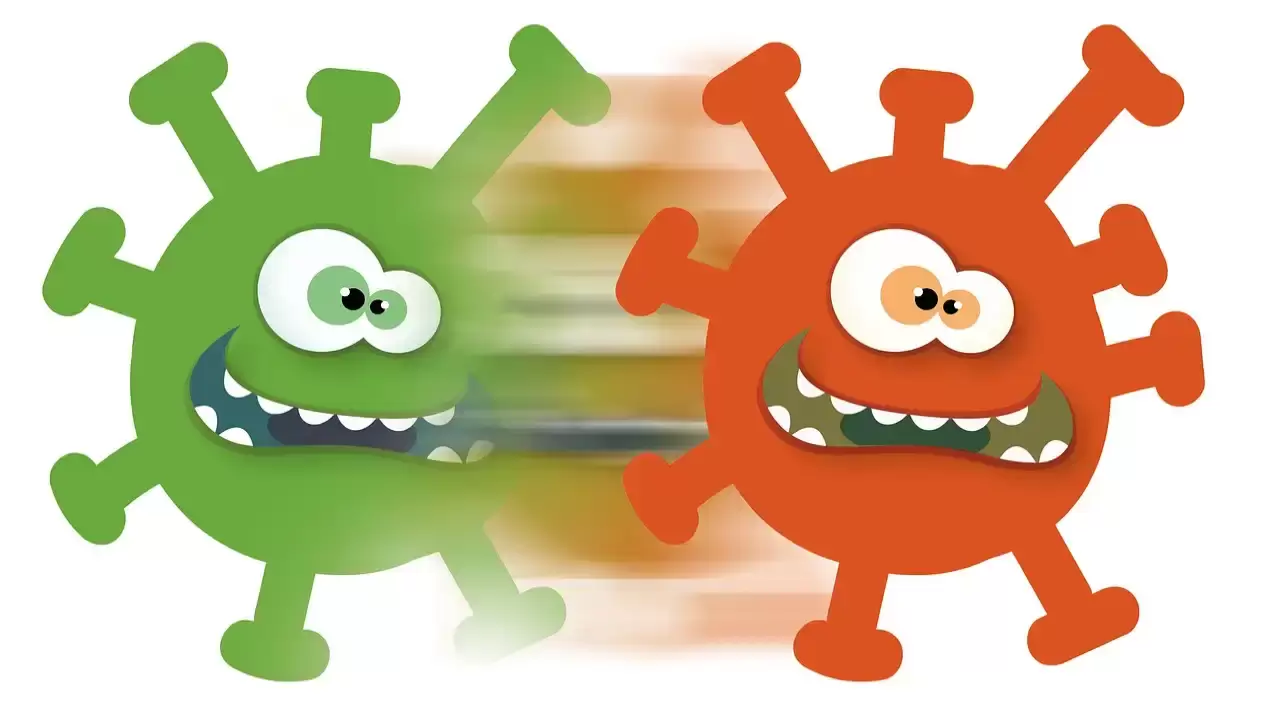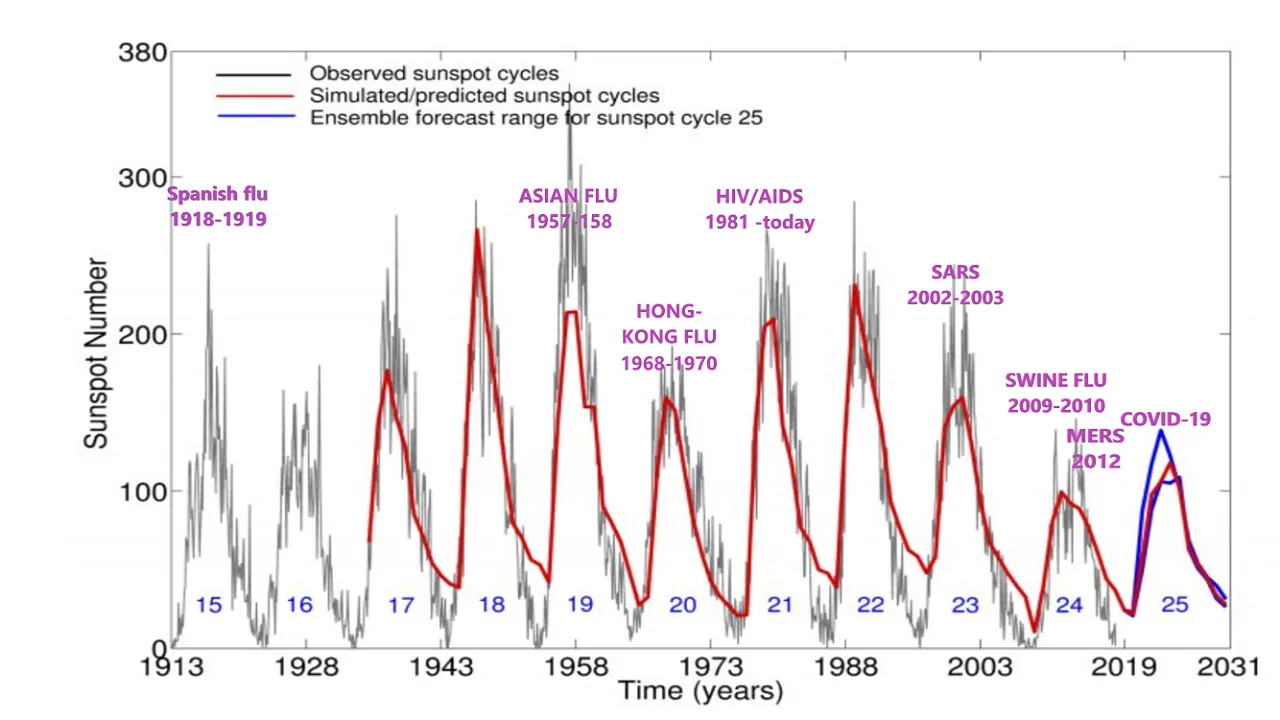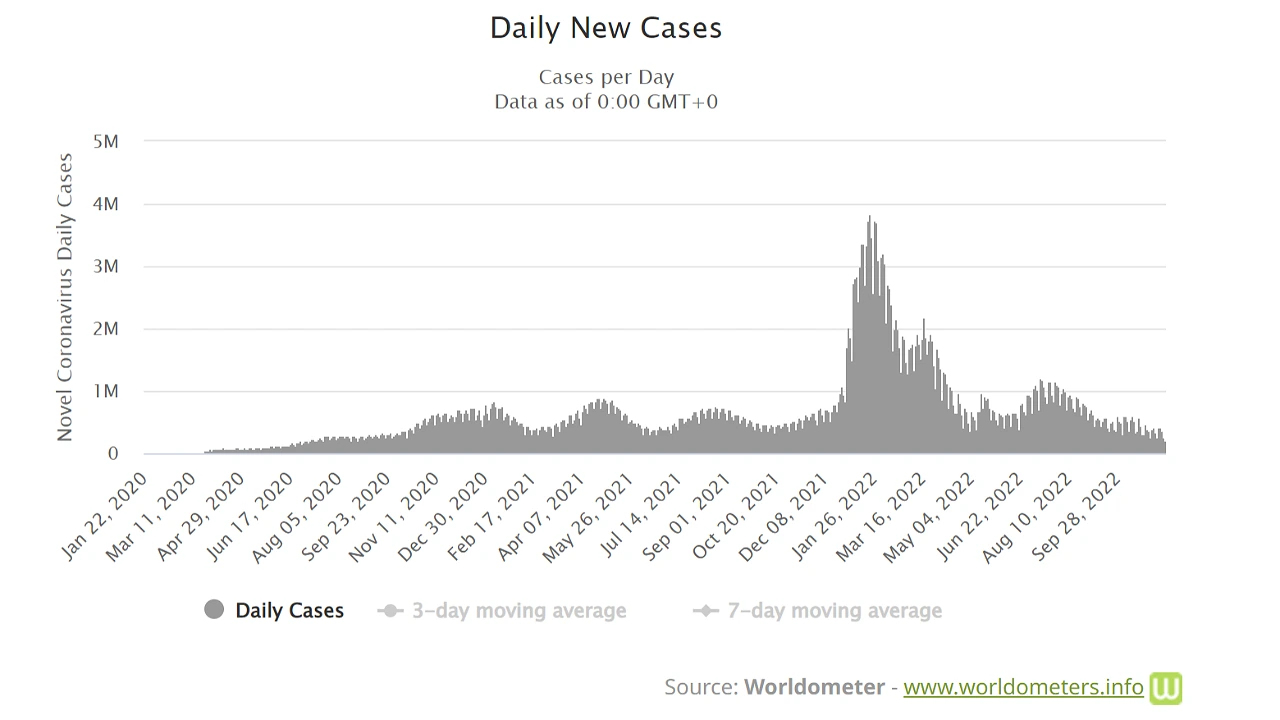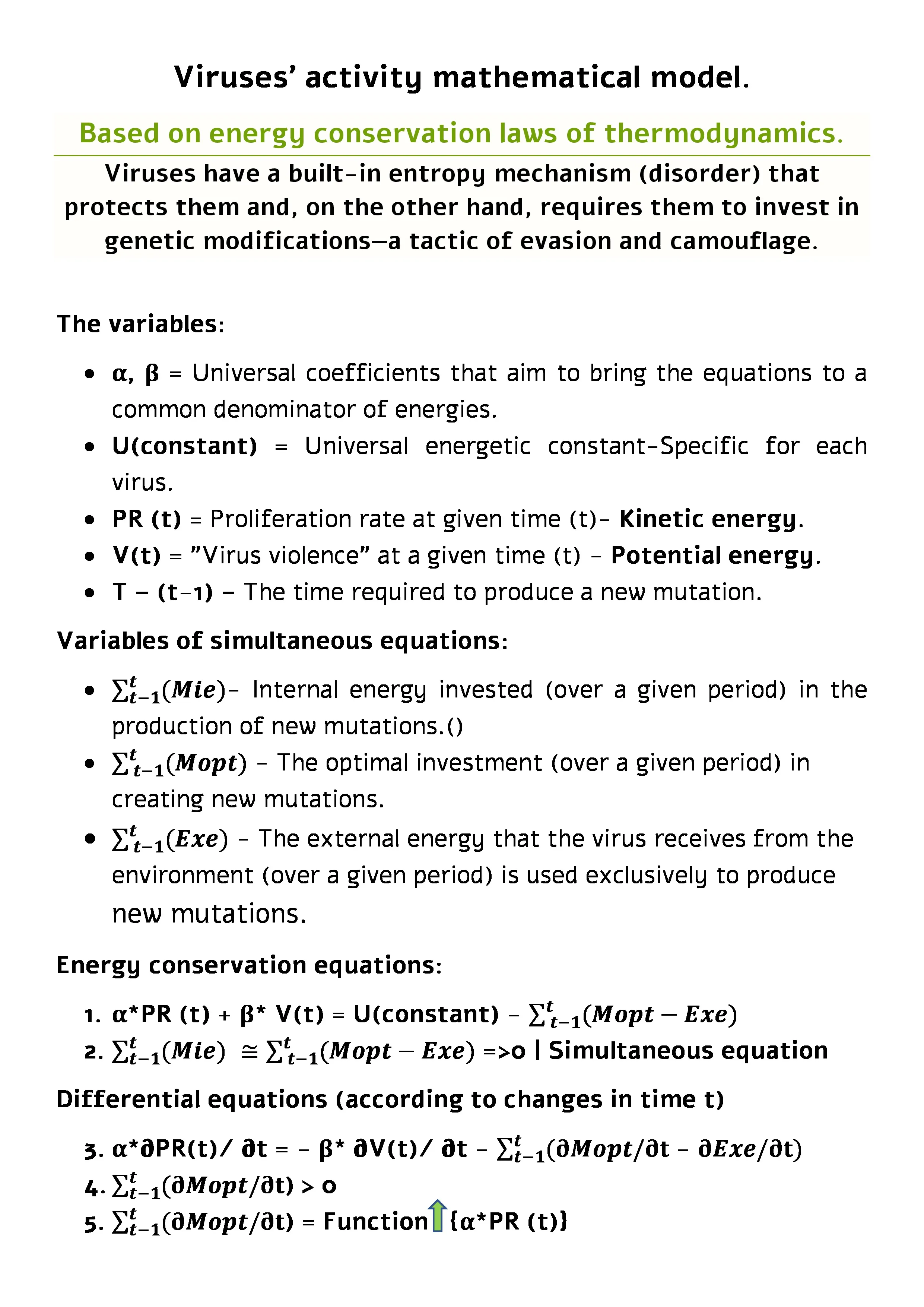
"To discover the universe's secrets, think about energy, frequency, and vibration. (Nikola Tesla)"
This broader model presents a different, energy-based view of virus outbreaks and their virulence. According to the model I present, a situation in which a very virulent virus, such as the Ebola virus, also spreads rapidly is unlikely.
- I presented this model to the artificial intelligence system DeepSeek, a physical-mathematical genius, which formulated the physical-mathematical model. This model is conceptually correct in the assumptions I presented. It still needs validation through empirical data. Since the AI's conclusions were identical to mine, I chose to present the simpler model I developed. The practical implications are predicting epidemic outbreaks and treating and preventing outbreaks of violent viruses.
- Note: This model is presented below in its mathematical form, which may cause some readers discomfort; however, it can be understood logically, even without delving into the mathematical model.
The graphs of new coronavirus cases were almost identical worldwide (except in China and a few isolated areas), while the number of deaths was related to the level of medical care; however, the rate of infection was almost uniform globally. The phenomenon of saw teeth, which has been observed worldwide, only strengthens the model I present. The graph of the saw teeth is reminiscent of changing gears in a manual car, transferring energy!
Introduction to viruses.
Each virus comprises biological molecules, including genetic material (single-stranded or double-stranded DNA or RNA) and related proteins. (Many scientists do not consider viruses alive.) Since the virus lacks any independent function outside the host body, it must obey the laws of energy conservation, which are reflected in the laws of thermodynamics, a branch of physics.
- Compared to other pathogens, including various parasites and viruses, they do not possess an independent cellular organelle for energy production, such as mitochondria; therefore, they depend entirely on the host cell for genetic replication. (Using the host's energy)
Anyone who examines the waves of morbidity that characterized the entire world during the coronavirus pandemic will find them striking. There is no reason for waves of morbidity in a continuous mathematical model. A similar phenomenon was observed during the Spanish flu outbreak a century earlier. Coincidence? Of course not.
- Precisely because viruses are relatively simple molecules with no independent, energetic function, their analysis according to the laws of thermodynamics (energy conservation) is relatively simple compared to the enormous complexity of the biochemistry of viruses. Looking at viral mutations as a completely random process is incorrect. Viruses have a built-in mechanism for generating entropy, or disorder.
The waves of infection observed during the COVID-19 pandemic and before it, such as the Spanish flu at the beginning of the 20th century, cannot be explained without considering the energetic dimension, much like shifting gears in a car.
Viruses have a built-in mechanism for entropy (disorder) that makes them more resilient, but this requires them to invest energy in modifications—an evasion tactic.
- The idea that solar flare cycles, which occur every 11 years, affect viral diseases is not new. The theory and model of energy conservation I propose regarding viruses are unique and original. Link: Sunspot Cycle and Human Health: Since viruses are relatively simple molecules with no independent, energetic function, their analysis according to the laws of thermodynamics (energy conservation) is relatively straightforward compared to the enormous complexity of their biochemistry. Link: Solar flare (Wikipedia)
Except for the Ebola virus (1976) and COVID-19, all other viral epidemic outbreaks lasting over 100 years occurred near the peaks of solar flares.
This model utilizes the principles of energy conservation laws of thermodynamics.
- Thermodynamics is a branch of physics that deals with the relationship between heat, energy, and the production of work from physical systems. Its four fundamental laws serve as the basis for a broad theory that touches all areas of the natural sciences. Its influence is especially felt in the fields of chemistry and biology.
Link: Thermodynamics (Wikipedia)
It is incorrect to consider viral mutations a completely random process. Viruses have a built-in mechanism for generating entropy, which makes them more resilient. However, this requires them to invest in genetic modifications, a tactic of evasion and camouflage.
Mandatory assumptions of this model:
- The premise is that the host's energy is directed only to replicate viruses and does not serve to modify the viruses' genetic makeup through mutations.
- Viruses mutate, but this is an entropy mechanism and cannot be attributed to natural selection, a biological process that applies only to organisms. Link: Viruses mutate but can't be attributed to natural selection.
By analogy, similar to humans who absorb solar energy—ultraviolet radiation (electromagnetic radiation)—to build vitamin D and also for energetic charging (which has a positive effect on our bodies), viruses can absorb solar radiation energies (electromagnetic radiation) at specific frequencies to create new mutations aimed at increasing their ability to infect.
Base assumptions, consistent with the first law and second laws of thermodynamics:
Energetic systems can always be described using their Kinetic energy + their Potential energy. The model assumes that no significant energy loss (e.g., heat) exists in the energetic and biochemical processes of creating new mutations.
- The laws of thermodynamics and energy conservation are always valid, but they are very complicated to apply to living things because, unlike viruses, they produce their energy.
- Viruses are neither living nor inanimate. A virus is a parasite, devoid of independent, energetic ability, that uses the host cell and is, therefore, the exception that meets the criteria for applying the laws of thermodynamics.
The first law of thermodynamics extends the law of energy conservation. "Energy does not disappear and is not created out of nothing." (From Wikipedia)
- Precisely because viruses are relatively simple molecules with no independent, energetic function, their analysis at the level of the laws of thermodynamics is relatively simple compared to the enormous complexity of the biochemistry of viruses.
- Each virus has a unique "energetic fingerprint" expressed in constant, unchanging energy, without requiring an external energy source. The host cell can be hijacked, but cannot change the virus's energetic properties.
Examining a single virus is similar to examining any synchronized group of viruses. (Similar to a beehive or a colony of bacteria)
Description of the basic model.
The energetic signature of each virus is divided into two parts: (Since these are entirely different scales, they have constant coefficients that make them uniform energy units.)
At any given time (t), the virus has provided energy, which is the result of kinetic energy (infectivity) and potential energy (violence).
- Kinetic energy is expressed in the virus's ability to increase.
- The potential energy is reflected in the "virus violence" level and its ability to cause acute illness.
On the other hand, the virus must regularly invest energy in survival by creating new mutations.
- The virus allocates energy over time (t) to create new mutations. The result is revealed in 1) a and d, which is reflected in the improved ability to spread the virus.
The premise is that entropy, or disorder, as manifested in improved infectivity, is far more critical than the virus's virulence.
- Therefore, the virus is willing to sacrifice its violence but not its ability to spread. The solution results from built-in simultaneous optimization, which should come as no surprise.
In a given wave of illness, the violence of the virus does not change. (The derivative of the potential energy with respect to time equals 0.)
Variants (mutations) and the second law of thermodynamics.
The second law of thermodynamics is that a system will always aspire to the highest entropy (disorder) and the lowest energy level. This law is mainly expressed in chemical reactions. (From Wikipedia)
- A mutation in viruses is an expression of entropy. (Disorder) The virus strives to spread and, in the process, descend to the lowest possible energy level. To spread and increase circulation, it must give up something. (To conserve its total energy.)
- New viruses are not created "out of nothing." They must have external energy that will activate their mutation mechanism.
- The "host" cell allows the virus to replicate itself, but does not provide the virus with the energy needed to produce mutations (variants). The energy required to produce mutations must come from the environment or at the expense of existing energy, reflected in the slowdown in the spread of the virus. External energy may be electromagnetic radiation. A notable example is the cosmic radiation of solar flares.
A solar flare is an intense eruption of electromagnetic radiation in the Sun's atmosphere.
Solar flare cycles lasting over a hundred years are thought to explain the outbreak of most viral pandemics.
During the World Wars, no significant viral outbreaks were recorded.

The impact of solar flares on creating new variants is very substantial.
Link: Top 50 solar flares of the year 20XX
The virus can absorb energy only at specific frequencies, precisely synchronized with it. Not every solar flare charges the virus's energy. However, the probability is higher when there are many solar flares, particularly at the peak of the solar flare cycle.
- Intense solar flares from October to December 2021, with a relatively small time difference, sharply increased the disease's spread rate. The powerful solar eruptions peaked the energy level, creating many mutations that bypassed the vaccines and dramatically expanded the infection level. As expected, the violence caused by the virus has dropped sharply!
- The Sun emitted a significant solar flare, peaking at 11:35 a.m. EDT on October 28021. NASA's Solar Dynamics Observatory, which constantly watches the Sun, captured an image of the event.
- Reports indicate that a solar storm that erupted on the Sun on December 20, 2021, could disrupt Christmas 2021, as NASA has warned of an incoming "impact" that could cause radio disruptions and GPS issues.
Several solar storms were recorded at the beginning of 2022. They were not very strong but had a short time difference.
The phenomenon of sawtooth-like waves observed during the coronavirus outbreak is not accidental.
The graph represents aggregate data from all countries worldwide.. You will find charts with similar trends in most countries worldwide, with a few exceptions. The virus is temporarily forced to expend energy to create new mutations. (Unless it has an available external energy source, such as solar flares) The phenomenon of waves is consistent with reports of the Spanish flu. (From 100 years ago and more)
COVID-19 Daily New Cases. (Updated November 2022. (Worldmeter)

The mathematical model is explained in the text.
This model can be understood even without a thorough understanding of mathematical analysis.
Although this mathematical model is currently untractable, it provides far-reaching insights. These equations are the result of the first and second laws of thermodynamics. Energy is not created out of anything. Mutations are an entropy process that must occur. Note that the virus must perform many mutations until it reaches its maximum proliferation ability.
- The virus's kinetic energy is expressed in two components: 1, its rate of proliferation, 2, its investment in energy at a given period in the production of new mutations, and 3, its potential energy, which is expressed in its "violence" = equal to a unique universal Constant+ virus external energy absorbed from the environment in the form of specific solar flares during a certain period.
- To make the variables consistent, they must be multiplied by universal coefficients that reflect their energetic status (I ignore them for illustration). They exist in formulas.
- When we take the derivative of the entire equation concerning time, the universal coefficient remains constant (it does not change over time). We are left with four variables.
- The energy investment of the virus in producing new mutations is always positive at any given point in time. The energy invested in new mutations over time, which is the time it takes for the virus to generate new mutations, will always be positive. (Greater than 0)
- The investment in producing new mutations results from optimizing a simultaneous equation, considering whether the virus has received energy from an external source. If the virus does not have an external energy source, it invests its energy, mainly at the expense of its infectivity. (Hence also the phenomenon of infection waves that scientists are unable to explain)
- The investment in new mutations during each period is positively reflected in the virus's ability to increase its infection rate, but with a time difference. Investment in mutations is positive but declining. (Otherwise, the equation will not converge.)
- An example (not necessarily realistic) of a suitable function that reflects the relationship between the energy investment in mutations and the return on proliferation is the square root of X; it increases steadily (positive first derivative) but decreases (negative second derivative)
- During each new wave, the level of violence of the virus remains unchanged. (Derivative of virus violence relative to time equal to 0)
- The model assumes that the time required to produce a new mutation is fixed and does not depend on external energetic variables. Each virus has a unique value.
The proposed model will provide a critical variable figure (the built-in change in the infectivity rate), improving the analysis of existing mathematical models.
Link: Compartmental models in epidemiology (Wikipedia)
- The S.I.R. (Susceptible, Infectious, or Recovered) model is the most common mathematical model for epidemiological prediction. The model includes a set of differential equations. The model assumes that someone who falls ill (or dies) will not fall ill again. (Does not match reality) The rate of infection and recovery is not fixed; it depends on many variables. The model I propose does not stand alone; it will be able to improve existing models later on, but their level of complexity will remain high.
Viruses: Virulence and Proliferation Model Formulated.

Summary, Conclusions, and Recommendations.
The unexplained waves of infection of the coronavirus suggested a whole dimension missing - the energetic dimension. The waves of infectivity are reminiscent of a racing driver who accelerates on the descent when they know an ascent is ahead. Replacing its kinetic energy (velocity of motion) with potential energy. (Height)
The mathematical solution of these differential equations, using empirical data on solar flares and viral outbreak frequencies, may provide an unexplored perspective on viral outbreaks.
- The first and second laws of thermodynamics cause the virus to constantly try to increase its infection rate, Thereby Maximizing entropy. It must produce mutations to improve proliferation, bypassing the immune system and vaccines.
- Still, the formation of new mutations costs internal energy (without an available external energy source), which must be reflected in a temporary slowdown in the infection rate. (This is the explanation for the phenomenon of infection waves.) and at the level of violence caused by the virus. All this is because the energy available to the virus is limited. (Energy is not created out of anything.) Intense solar flares can produce new mutations without any energetic relinquishment of the level of infection or the level of violence of the virus! Therefore, after intense solar flares, highly contagious waves of the virus arrived.
The mathematical model can form a theoretical basis for a series of discoveries.
- Since each virus has an energetic "fingerprint," it will be possible to map all viruses with their energy coefficient. It will be possible to statistically determine (using regression analysis) the equation that describes how the virus produces the added value of the mutations. (This is the most comprehensive research.) Using statistical analysis, it will be possible to map viral processes over the years. Such research will have practical, health, and economic implications.
Viruses employ a highly successful evasion strategy, which stems from the laws of entropy (disorder), integral to natural processes.
- Morbidity waves occur when viruses are forced to relinquish kinetic energy, or infectivity, to produce new mutations. The virus's violence (potential energy) remains unchanged during each wave.
- Over time, an increase in the virus's ability to infect comes at the expense of a setback in its virulence.
- The virus should regularly invest in producing new mutations during the optimization process. Although further investment in mutations is beneficial, it is declining. (Otherwise, the process does not converge.)
- Solar solid flares, synchronized at the appropriate frequency, enable the virus to produce new mutations without compromising its virulence or reducing the production of new conversions. An inevitable conclusion is that we must closely monitor solar flares and expect short-run results.
How are new strains of viruses created?
- Creating a new virus strain requires significant changes to the virus's code, which consumes a substantial amount of energy. The energy required for this process cannot be supplied solely by the host cell; an external energy source is also necessary. Most often, this source is solar flares that release high-intensity electromagnetic radiation.
- The phenomenon of viral epidemics breaking out at the height of solar flares is not accidental. The amount of solar flares (not necessarily the intensity) is at its peak.
It is no coincidence that no very violent viruses are contagious. These are very high-energy viruses outside the energy signature range of viruses.
- Imagine viruses like SARS-CoV-1 from 2002 to 2003, with mortality rates of about 9%, breaking out today with the tremendous level of infection caused by COVID-19. The world would collapse only from panic! I argue that this is impossible on the energetic level. The extraordinarily violent virus gives up its level of infection (kinetic energy)
Do solar flares affect our immune system?
- Solar solid flares may also affect the magnetic field in our bodies and the vortex around them, thus impacting our immune system. This subject is in its infancy and has not been thoroughly researched.
Those who are surprised by the fact that viruses run a brilliant optimization!
- It is a topic for broad philosophical discussion. Mathematical expressions are found everywhere in nature, and viruses are no exception.
This model needs further examination, validation, mathematical development, and statistical confirmation. At the same time, my findings have far-reaching methodological and practical implications in every possible aspect.

Precisely because viruses are relatively simple molecules with no independent, energetic function, their analysis according to the laws of thermodynamics (energy conservation) is relatively simple compared to the enormous complexity of the biochemistry of viruses.

